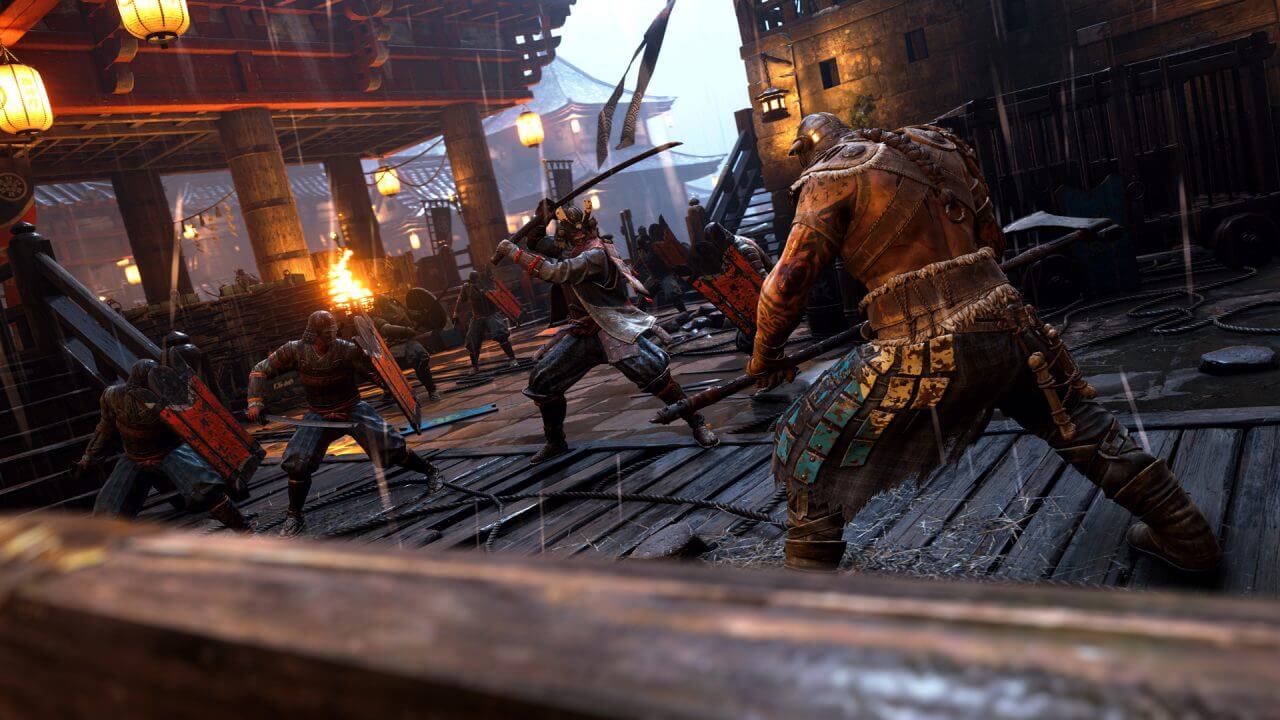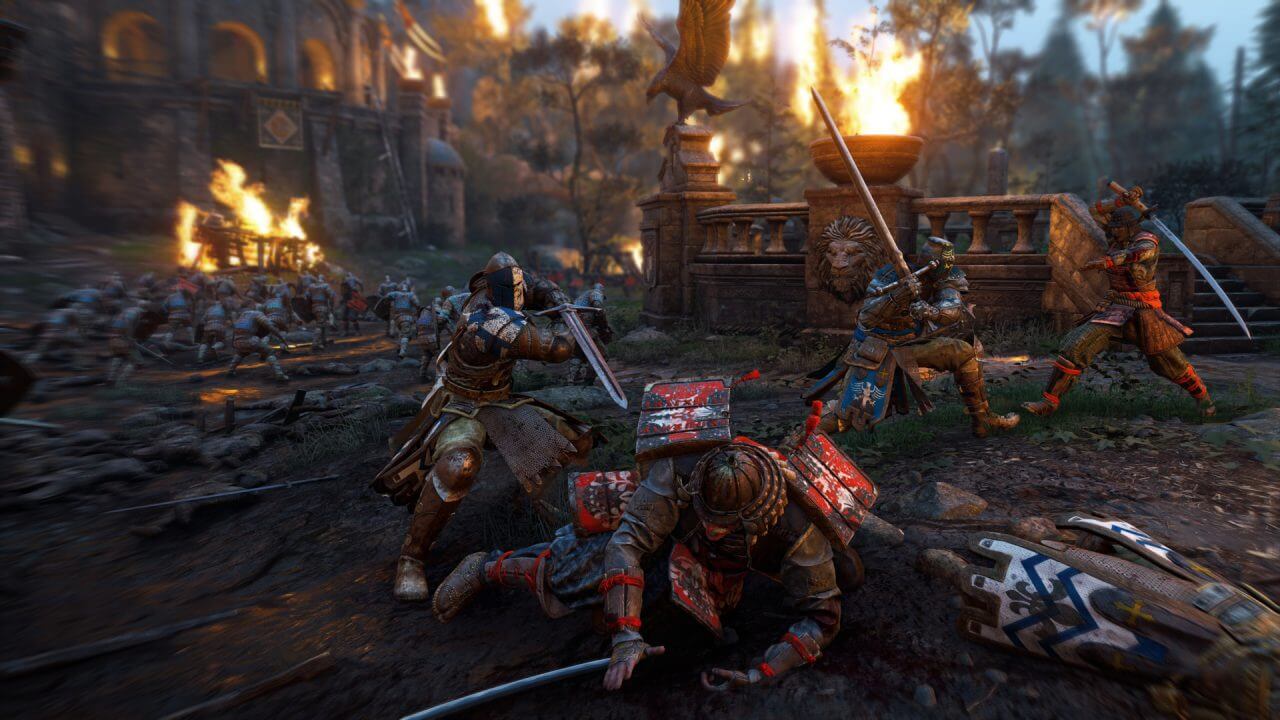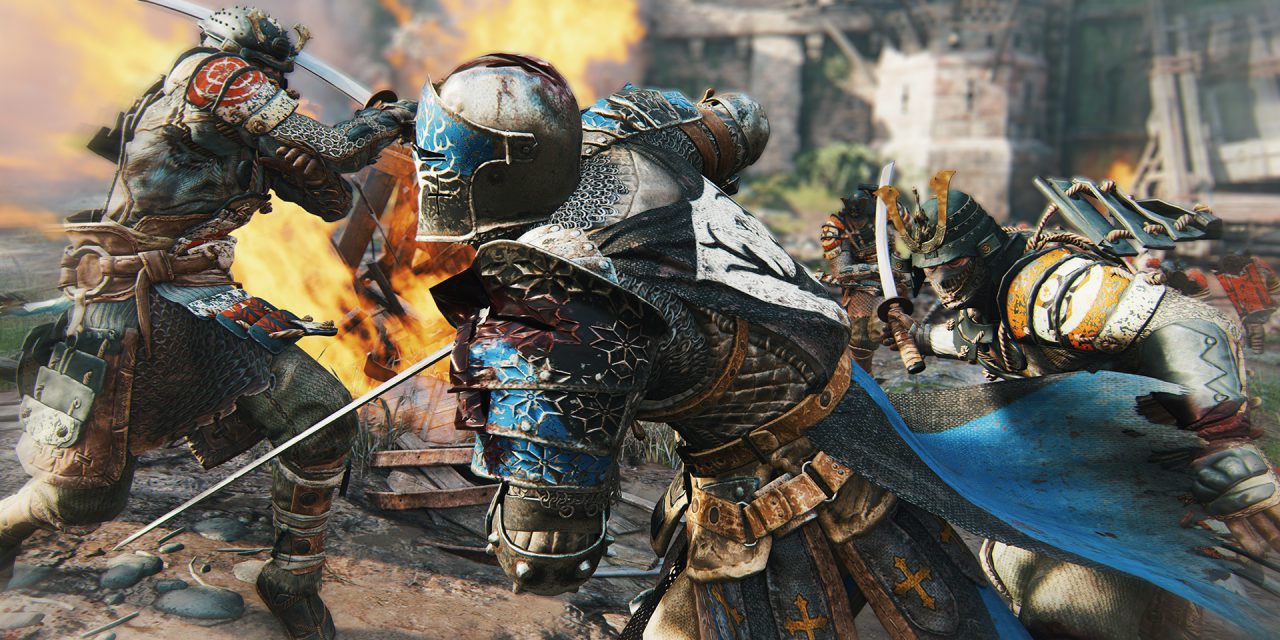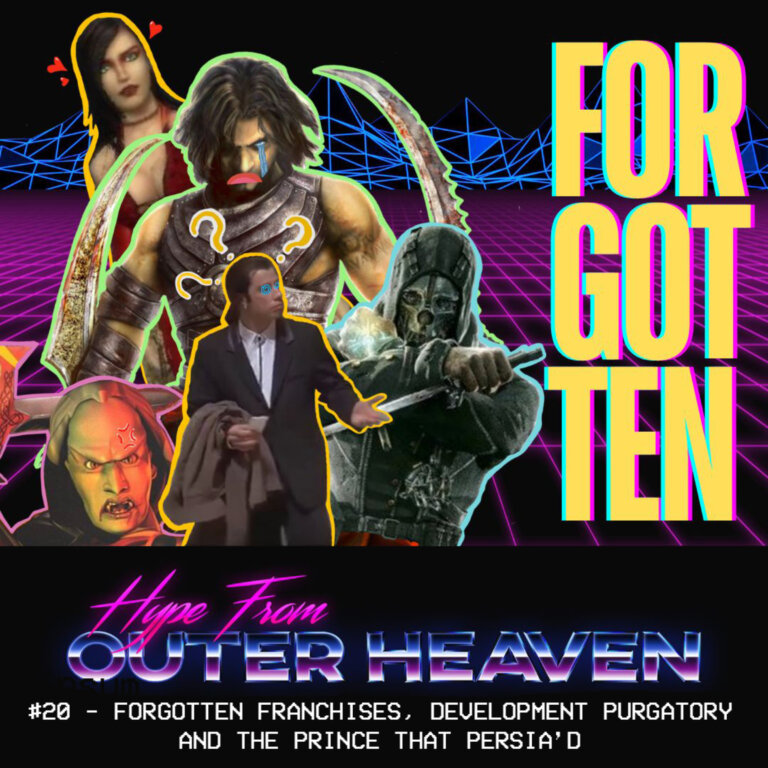For Honor – Stike Me Down, Sir!
I find most generic player vs player (PVP) games to be too stressful and eventually wear me out to the point where playing it is counter-productive. Really, this just stems from playing and enjoying single player games for the last twenty or so years. Thankfully for my own insanity, I had a very different experience with For Honor and I found myself falling in love with this genre quite quickly.
It’s really not all that difficult to pin down why I love this game so much. It’s got burly bearded Vikings, the ability to remove heads from shoulders and it’s got a fair whack of a learning curve to keep me invested. It’s not very often that a video game comes along and changes your (once bleak > now bright) outlook on a whole genre.
For those who don’t know; For Honor is a new third person, hack and slash fighting game (or in my case; a “fail to block most of the time and get pushed/fall off a bridge a lot – but not bitter at all about it” game), that was developed and published by Ubisoft for PlayStation 4, Xbox One and PC.
For Honor is comprised of several game modes, including a campaign that can be played either solo or with another player. For me, For Honor’s six-to-eight hour campaign is a glorified preparation/training mode for when you decide to step up and play multiplayer. The campaign does succeed in the sense that you spend time with each of the factions individual classes learning their different roles and pitting you against AI combatants but in my opinion, the campaign basically tanks when it comes to actually telling you a story. Sad, bur true – I’m not saying I didn’t enjoy it, but it did feel a little forced. I really don’t think it’s an issue for most people because you know going in that you’re really playing/buying this for the multiplayer and you wouldn’t be hard up if you skipped it.

For Honor really redeems itself/comes into its own when you delve deep into the multiplayer. Players have the ability to choose from three different factions; The Knights of the Iron Legion, The Warborn Viking clans and The Samurai of The Dawn Empire who are locked in an eternal battle for control of an alternate medieval world. Originally I found the concept of three opposing forces a little confusing, but I can imagine if would get quite repetitive without the third and it actually came to be one of the things I enjoyed most about the game.
Multiplayer is set up across a Faction War board where players from each of the three factions battle for control over territory across the board. The simplest way of explaining it is that; each battle fought across all multiplayer modes, add up to determine the course of the war itself. When a game ends, the player is awarded war assets that can be placed on to the war board and distributed to individual territories – the faction with the most assets in that area wins that territory.
Multiplayer currently has five game modes; Dominion, Duels, Brawls, Elimination and Skirmishes. Dominion matches are 4 v 4 battles to capture specific spots on the map and control them. Capturing points, killing soldiers and players on the opposing team earns you points. Once a team reaches 1000 points the losing team has the chance to respawn and lower the opponents score by recapturing their control points. Duels are fairly self-explanatory, players will fight 1 v 1 with human players or AI controlled bots – best out of five wins the match. Brawls are similar to duels in the sense that it’s best out of five, however, the odds are little more difficult as it’s now 2 v 2 with human players or AI controlled bots. Skirmishes (my favourite) are 4 v 4 full-scale battles that are supported by soldiers and their captains – reach 1000 points and win the game. Finally, there is Elimination mode – Elimination matches are essentially like Brawls but in a bigger 4 v 4 scale.

For Honor’s meat of impressiveness lays with its combat system and Ubisoft has (in my opinion) created possibly the best and most in-depth system for a game in the genre. Combat runs on a multitude of light/strong attacks, guard breaks, defensive stances and all of which are different depending on the class and faction. Both attacking and defending are conducted through a reticle which is difficult to master but effective once you do. One of the best things about the combat system is that just by looking at your opponent you can tell what stance they are in, which way they will defend/attack and adjust accordingly making the battles somewhat more strategic than a generic hack and slash. Once your drain your opponents health, you care given the choice of two brutal executions (or walking away – but cleaving your opponents head from their shoulders is very satisfying…)
“Attack is the best form of defence” – To that, my good man; I say “Bollocks!”. That statement is the epitome of false in For Honor’s case. Running the hell away if you’re overwhelmed seems to work fine for me I’m not entirely what that last point says about me but alas, it’s all for the good of the faction! Running the hell away if you’re overwhelmed seems to work fine for me I’m not entirely what that last point says about me but alas, it’s all for the good of the faction!
Review copy of For Honor provided by Ubisoft. This review is featured on OpenCritic.







